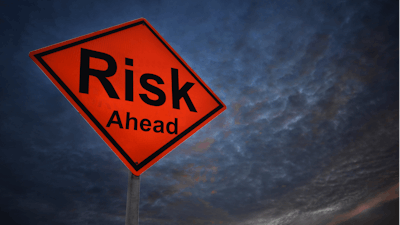
Asset maintenance first hit the headlines during the late 1980’s, when it became a target for efficiency improvements throughout the process and chemical industries. Initiatives at the time focused on traditional methods of improvement; reducing the numbers of staff, and trying to work smarter with fewer resources. Despite these cuts, the pressure has remained for asset managers to continue to reduce costs and increase efficiencies.
While there has been a tendency to develop and implement mechanical integrity (MI) and reliability programs separately, there are ways to improve asset risk management. Combining MI and reliability programs is a major strategy for today’s operators of capital-intensive, high-risk equipment and infrastructure.
Broadening the Spectrum
MI and reliability programs can help to address a broad spectrum of asset risks, including operational, environmental and regulatory risks. There are also similarities between MI and reliability programs in how effective they are at identifying safety-critical equipment and asset criticality, as well as feeding into management systems and reliability business practices with the use of today’s asset data and data management systems.
Typically, an organizations’ mechanical integrity program focuses on compliance with regulatory requirements, while their reliability program efforts focus on equipment reliability and maintenance efficiency. With few exceptions, we have not seen organizations combine MI and asset reliability programs to create a holistic asset management program.
There likely have been several motivations for maintaining these programs separately, such as:
- The desire/concern of regulator actions relative to combined programs (e.g., regulator holding an organization accountable for reliability program activities).
- Seemingly competing objectives and goals of different organizational groups (e.g., MI group, reliability group).
- Potential understanding/viewpoint that regulatory and business performance requirements need to be managed differently.
- Lack of awareness of the potential efficiencies and benefits of combining these two programs.
The primary objective of both MI and reliability programs is to proactively perform asset maintenance activities to reduce the likelihood of asset failures, and the overall objectives are nearly identical. One of the primary differences, however, is the type and risk level addressed by these two programs.
MI programs focus on managing high-consequence events impacting safety and the environment that occur at a lower frequency, while reliability programs focus on lower-consequence events (including economic events) which often happen at a higher frequency. While some may argue that these programs are managing different risks and for some equipment failures, and this may be true, there is likely more commonality than often first realized.
For example, the high vibration of a tower reflux pump (discovered via a reliability vibration analysis program) may appear to be a reliability issue, but the unexpected failure of this pump could result in an over-pressurization of the tower and activation of a safety system (which many would classify as a PSM near-miss).
Likewise, there are organizations that do not consider a leak (loss of containment) in piping as a reliability issue. In reality, leaking equipment often results in downtime (or other production impacts); therefore, leaking equipment is unreliable equipment.
Blending MI and Reliability Programs
A key aspect of both programs is the implementation of management systems (the commonly used term in the process safety world) or business processes (the commonly used term in the reliability world). Asset management systems define the overall asset management policies and objectives and the systems and processes needed (who, what, and how) to implement the asset management policies and achieve the program objectives.
ISO 55001 addresses the elements of an asset management program (the “what”) and ISO 55002 provides specifics regarding the “how” of the asset management program. While the strategic and conceptual similarities between Reliability and MI programs are interesting, the important synergies are related to the tactical activities that influence the day-to-day implementation of these two programs.
If we consider a few examples of potential synergy between asset reliability and MI activities – for example a process pump (in a hazardous chemical service), it includes common reliability activities such as operator walks (visual inspection) and vibration analysis. Both of these practices are also MI-related activities as they help to detect and prevent loss of containment events. Another example is instrumentation and control system reliability practices, such as periodic sensor calibration and functional checks. When these practices are applied to safety-critical instruments and controls (e.g., safety instrumented systems), MI requirements are incorporated.
Take the example of MI practices for fixed equipment; specifically a shell and-tube heat exchanger and pressure vessel. The common practices would include API-type inspections and testing such as visual inspection and pressure boundary thickness NDT. Leaks in a heat exchanger and pressure vessels during operation can result in unplanned downtime (which is a reliability impact). Also, these API inspections and tests help predict the end-of-life for these equipment items which allows for planning and proactive equipment replacement (which is a reliability issue).
A key area between MI and reliability programs is asset data management, where both programs require compilation, verification, and management of asset data to be effective. This data management effort involves developing a master asset list and then populating this list with relevant asset-related data.
Master asset lists typically involves:
- Reviewing the P&IDs (to identify assets).
- Compiling asset information from engineering, maintenance, operational, etc. files and records.
- Performing field walk-downs to verify the asset list and collecting missing data.
- Establishing the master asset list and data in the data management systems.
- Organizing and associating the relevant data (e.g., drawings, OEM) in the data management systems.
While the steps for developing the master asset management list for MI and reliability purposes are similar, each program has slightly different data needs and sources based on equipment type.
In addition to the slightly different data needs for MI and reliability programs, two data management systems are typically needed to store the asset data and manage the programs - the computerized maintenance management system (CMMS); and the inspection data management system (IDMS).
While these two data management systems have many similar attributes, they are used for different purposes and operate differently. The CMMS is a software application that helps maintenance organizations manage their maintenance activities in one place. The IDMS is used to track and manage asset condition over time to determine future inspection and testing schedules.
This software system uses equipment condition assessments (e.g., thickness data) to calculate rates of degradation (e.g., corrosion) to assess the expected remaining life of the asset before failure. Additionally, the IDMS can be used to calculate the current and future risk of assets in order to optimize inspection and test plans (e.g., Risk-based Inspection [RBI]). These inspection and test plans (e.g., type of activity and due date) are sent to the CMMS for scheduling and execution planning.
When inspection and testing results are uploaded to the IDMS, recommendations that require corrective actions to resolve equipment deficiencies are sent to the CMMS via work order for execution/tracking, and then ideally the CMMS communicates back to the IDMS when the action is completed to satisfy regulatory recording requirements.
Motivation for Combining MI and Reliability Programs
Organizations that do combine their MI and reliability programs typically achieve tangible benefits that relate to efficiencies in asset cost and programs, such as:
- Reducing unplanned downtime – reduces losses of containment and functional asset failures.
- Reducing planned downtime – both MI and reliability asset plans include the implementation of activities related to assessing assets, which reduces the need for intrusive activities and helps predict capital/operational expenses for asset replacement.
- Program efficiencies – reduce the level of effort needed to develop and maintain different work processes, data systems, etc. to operate the MI and reliability programs results in duplicated efforts.
In terms of intangible benefits:
- Confidence – a combined program provides organizational stakeholders with more confidence that regulatory compliance requirements are being met; asset failure risks are being managed; and holistic asset conditions are known and being managed.
- View – creating a “single source” of the asset integrity and reliability provides a single view of the asset management program.
- Direction – combining the programs provides clear, unified expectations for the asset management program.
The bottom line is that combining MI and reliability programs can reduce the cost of asset maintenance. It allows organizations to move from viewing the MI program as a burden to the view that both MI and reliability programs make business sense.
More information about the ABS Group can be found at abs-group.com.






















